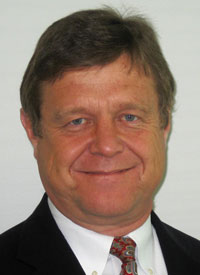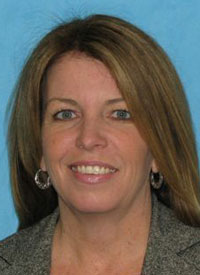 If you’re not ready for ICD-10, you’re not alone.
If you’re not ready for ICD-10, you’re not alone.
Set for full rollout on October 1, the much delayed 10th revision of the International Statistical Classification of Diseases(ICD-10) and Related Health Problems is probably the biggest revision to medical coding and billing since computerized medical coding and billing practices began decades ago.
And like the rest of the medical community, oncologists and their support staffs and services face a lot of learning and uncertainty as they prepare to make the transition. Their biggest and most pressing question: How will I get paid under the new system?
Doug Moeller, MD, a medical director at McKesson Health Solutions, has been working with most major health plans providing software for claims auditing, medical practices, and episodic care. Preparing for ICD- 10 has been a major part of his job.
“Learn first the codes you are most likely to use,” Dr. Moeller said during a recent interview. “What are the codes that you use most? It is probably, I am going to tell you, about 400 to 600 codes for an average oncology practice, for their daily business.”
For a first step to surviving the transition from ICD-9 to ICD-10, he advises that oncologists and their practice support staff compile a list of the codes they most often use under ICD-9. Then they should find the equivalent codes within ICD-10, he said, and make sure that everyone who is part of a given practices’ billing procedures, from doctors to billing managers, understands those codes and where they fit within the daily grind of the practice.
That list “might not be as precise as I will need but it will get the job done. It will make sure that I get my billing out,” Moeller said.
Like ICD-9, ICD-10 has general diagnosis codes that physicians can apply to the earliest billings under the new system. Later billings, he said, can grow in detail and complexity as the physicians and the insurers who handle the physicians’ claims grow more comfortable with the new system.
Code selection should be basic or conservative initially, he said. Codes that seem out of place or exotic to insurance companies will likely raise red flags that will delay the billing process— sometimes for months.
Oncologists can check with their medical associations or regional colleagues for help finding the ICD-10 equivalents to their present basic and advanced codes. Once the “cheat sheet” is initially compiled with all the codes used most frequently, the list should grow by a few hundred a month until it is all-encompassing, Moeller said.
Who Handles the Transition?
Moeller and Dawn Cook, chief practice officer at Penobscot Community Health Care, a nonprofit health center that has 19 outlets throughout Maine, recommend that practices identify individuals already well versed in coding to specifically handle the ICD-10 transition for their offices.
 Dawn Cook
Dawn Cook
Cook advised that practices have one or two staffers trained not just in ICD-10 through the various indoctrination programs offered by medical associations, but also in project management, defined by the Project Management Institute as a temporary group activity designed to produce a unique product, service or result.
Small practices comprising of 1 to 6 doctors might not have the funding to hire more staff to tackle the ICD-10 transition, Moeller and Cook said, but designating one or two people already within a practice and familiar with coding to the transition would be wise. Hiring more staff “isn’t something small practices could bite off,” Cook said, “but they can and should have their managers and lead billers take training and tips about project management.” Project managers “take the essence of the idea and run with it,” tailoring small portions of generalized projects like the ICD-10 transition to available staff and ensuring that the individual efforts all fit together comprehensively, Cook said.
“As a profession, health care professionals have not been savvy as project managers, but we have the capacity to do it and now it is a buzzword with many associations that are offering training in this area,” Cook said.
Helpful Organizations
The American Health Information Management Association (AHIMA) and the American Association of Professional Coders (AAPC) are 2 of the many professional organizations offering ICD-10 training, Moeller said.
Oncology practitioners will likely need to move fast if they want to keep their billing current when the changeover to ICD-10 begins in October 2014, according to the Workgroup for Electronic Data Interchange (WEDI). That’s a coalition that the US Secretary of Health and Human Services formed in 1991, consisting of doctors, hospitals, health plans, laboratories, pharmacies, clearinghouses, vendors, and government regulators to enhance the quality of care via health information technology.
A December survey by WEDI of 353 respondents— 196 providers, 59 vendors and 98 health plans—found that 80% of all health care providers said they will not finish retooling their businesses and testing their ICD-10 compliance by October 1.
More than 20% of the vendors who responded indicated that they were no more than halfway finished creating programs and other products that would support ICD-10. Forty percent said they would not have products available to customers until 2014 and 40% of the health plan operators who responded had not fully completed their assessments of ICD-10’s impact, the survey states. All segments of the health care industry have progressed since the last WEDI survey in February 2013, but not enough to eradicate concerns, WEDI Chairman Jim Daleyn said in a statement.
“Unless all segments move quickly forward with their implementation efforts, there will be significant disruption (of health care practices] on October 1, 2014,” Daleyn said.
Practice Size
Moeller said he believes that the larger and more well funded practices will be wise to invest some resources in someone to lead them through this— an outside consultant or an additional worker or two.
The least prepared practices are probably the smaller businesses—less than 4 to 6 six doctors, who don’t have a dedicated practice manager. They often feel they don’t have resources to dedicate to system changes until it’s absolutely necessary. However, health plans who depend on diagnosis coding for paying claims correctly have been working on this diligently,” said Moeller.
“We are very alert to the opportunity for ICD-10 to be a lot more precise and a lot more confusing, so the larger entities have a lot more to lose, and they get that,” he added. “There is a whole spectrum of readiness. Some people have been really working on this and are very well-prepared. Some others are somewhat prepared and they have some challenges.”
Practices of 6 to 30 oncologists and organizations of 30 or more have the resources to allocate to the coding transition, which perhaps gives them an advantage over smaller practices, but the smaller practices have a counter benefit, Moeller said. The smaller practices’ lack of size leaves them more bureaucratically or managerially nimble than their larger competitors when it comes to change.
“They have a smaller span of engagement,” Moeller explained, meaning that a smaller practice’s lesser numbers of patients, treatments, and bureaucratic steps to coding bills and submitting them leave the practices better able to make the transition.
This smaller span will be helpful under ICD-10. A single diagnosis or treatment plan that once occupied a handful of codes now can expand massively as the 15,000 ICD-9 codes are replaced by 84,000 ICD-10 codes, Moeller said.
A simple example: Under ICD-9, a broken wrist is listed as an 814 regardless of which arm it occurs. Under ICD-10, physicians must specify which wrist is broken, plus whether the injury is treated on an initial encounter, subsequent encounter, and they must specify with routine healing, delayed healing, nonunion, or malunion, Moeller said.
More complex treatments require greater detail in coding. Under ICD-10, doctors treating a breast cancer must specify whether the malignant neoplasm is within the right or left breast and center or periphery of that breast, or in both breasts, Moeller said.
——————————————————
Prepare For The Medical Coding Certification Exam Here!
Originally published on: OncLive.com
Follow Medical Coding Pro on Twitter: www.Twitter.com/CodingPro1






